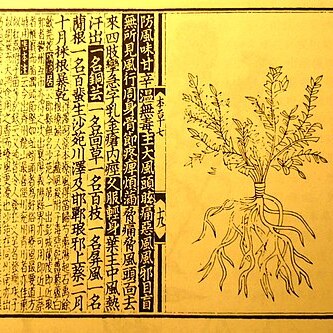A robust herb. It keeps growing from year to year. It grows 30-80 cm high. The rootstock has one bud at the end. This produces a singly stem. The leaves at the base and lower down are divided several times and are oval or triangle shaped. They are 7-19 cm long and across. The end segments are 2-3 cm long by 2-7 mm wide. The upper leaves are smaller and less divided. The flowers are yellow and small.

